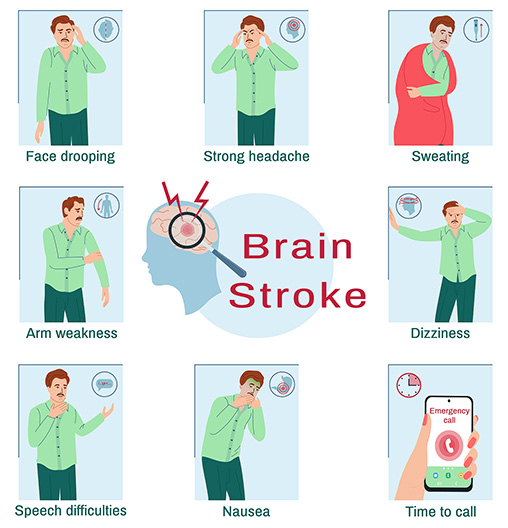The brain is the processor of our thoughts and actions. While our other organs serve important functions, the brain regulates most of their activities as well. Most noticeably, our thoughts, memories, decisions and motor functions all require a functioning brain. The blood supply to the brain comes from the heart through four separate arteries meeting in a circle at the base of the brain. From there, three arteries sprout on each side.
DRY STROKES
Dry strokes occur when one of these stops providing blood supply to the brain tissue, resulting in cells dying. Most commonly, this is from a blood clot.
The artery most often associated with strokes is the middle one, aptly named the middle cerebral artery (MCA). The parts of the brain innervated by the MCA are our motor function for one whole side of our body and our language skills. This major stroke results in the inability to walk, talk or use that hand and arm and often causes issues with the ability to do calculations and with memory formation and recall.

BE FAST: Symptoms and action for a stroke:
Balance difficulties
Eyesight changes
Facial drooping
Arm weakness
Speech difficulties
Time to call 911
WET STROKES
A second type of stroke is a wet stroke. Here, instead of the artery clotting off, a blood vessel inside the brain bursts, with the bleeding destroying part of the brain. The results will vary depending on which part of the brain is affected.
SPOTTING A STROKE
Stroke symptoms can be remembered with the acronym BE FAST (see sidebar). Recognizing the signs and seeking timely medical treatment at a stroke center is essential for recovery. If the artery can be unclogged within three hours, there’s a good chance of a near complete recovery. Even up to six hours, some of the brain tissue can be salvaged.
Specialists can feed a catheter up the arteries to the clotted one and try to open it. Even if that isn’t feasible, clot-fighting drugs such as TPA can be used to try to dissolve the clot and free up circulation. While this procedure carries about a 5 percent risk of converting the dry stroke to a wet stroke, it’s usually successful in dramatically reducing a stroke’s long-term effects.
Sometimes a person will suffer a mini stroke, medically called a temporary ischemic attack (TIA). This is an episode where the artery, instead of being clotted off, goes into spasm. It has all the symptoms of a stroke but only lasts a short time, usually an hour but up to 24 hours. It’s estimated that a third of patients who have a TIA will never have another, a third will have more TIAs and a third will go on to have a stroke. A TIA deserves a proper workup by your medical caregiver or a neurologist.
REDUCE YOUR RISK
To reduce your stroke risk, keep your blood pressure, sugar levels and cholesterol under good control, and don’t smoke. Unlike a heart attack, when taking an aspirin is advisable, do not take an aspirin for stroke symptoms, as that may turn a treatable dry stroke into a worse wet one.
If you or someone near you manifests symptoms of a stroke, call 911 to be taken to the nearest stroke center. In South Mississippi, the two certified stroke centers are Memorial Hospital of Gulfport and Merit Health Wesley in Hattiesburg.




Pingback: Survivor story: Belinda Hosli Tipton - Gulf Coast Woman Magazine